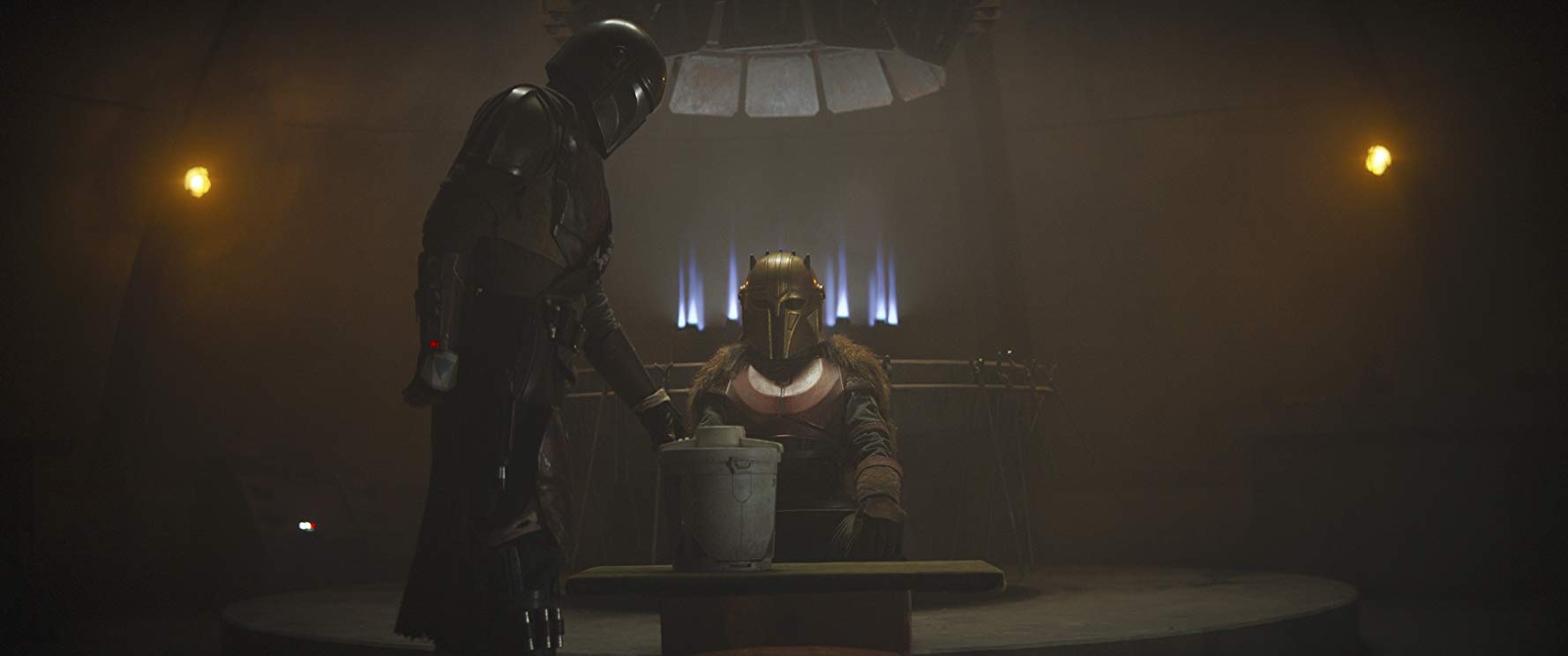The Best Thing About 'The Mandalorian'

Jacob Wasserman ’23 / Emertainment Monthly Staff Writer
This article contains spoilers for The Mandalorian.
My guess is if you’re clicking on this article, you probably already know what I’m going to talk
about. Social media has just been flooded with news pieces, fan-art, and piles upon piles of
memes about this one aspect of The Mandalorian. This thing is so good, it forced the entire
internet to agree on something for once. And that thing is of course… Jawas.
No, no, I’m just kidding. It’s Baby Yoda.

okay. Sure, it looked great (especially for a show made for streaming) and it’s half-ironically,
half-unironically awesome to see arthouse director Werner Herzog in something like this, but the
plot progression wasn’t really capturing my interest. To me, it just seemed like an average
Western-esque serial story, only with a science-fiction aesthetic. Hell, it’s not like that concept is
even super original (Firefly isn’t even twenty years old yet).
All that changed around the thirty-five minute mark. The Mandalorian (Pedro Pascal) and IG-11
(Taika Waititi) rid the area surrounding the location of their assigned bounty of all intruders. After
a bit of searching, Mando comes across the target, which is revealed to be an adorable, green,
wrinkled alien that appears to be from the same species as Yoda. Where did it come from? Why
was it there? Who would even want to kill such an innocent little baby? At the moment, I was not
concerned with any of that. All I knew was that I wanted Baby Yoda to be safe at any cost.
Since I watched the premiere, I have attempted to watch each weekly episode as soon as I
possibly can after its release, if only to check up on how the little guy is doing.

First off, the fact that Baby Yoda is an animatronic puppet rather than a purely CGI creation
works to its benefit. The most famous and well-remembered effects featured in the Star Wars
films have all been practical, from the All-Terrain Walkers in the Battle of Hoth to BB-8. On the
flipside, CGI in Star Wars has always had a somewhat negative reputation such as in the
remastered versions of the original trilogy which place unnecessary computer-generated
creatures in shots which were once CGI-free, making complete eyesores out of certain scenes.
Although technology has improved since the special editions were made in the 1990s, there are
still CGI characters in the more recent films whose screen presence ends up distracting
audience members due to lackluster effects. The appearance of a CGI Grand Moff Tarkin in
Rogue One, meant to replicate the appearance of deceased actor Peter Cushing (who had portrayed the character in A New Hope), falls short of convincing and ends up crossing over into the dreaded “Uncanny Valley.”
When creating a non-existent creature, practical effects are preferable to CGI most of the time
because the practical effects will carry a stronger physical presence. There is less need for the
audience to suspend their disbelief when watching The Mandalorian because although Baby
Yoda is not a real creature, his interactions with the other characters are still convincing
because he is a tangible object.

heavily resembles Yoda, but the character designers have taken some liberties on his
appearance, which I feel are for the best. For one, his eyes are reminiscent of traditional alien
designs, although the similarly huge pupils and irises in his eyeballs make his eyes appear
slightly more humanesque. Second, his gigantic, pointed ears simultaneously call to mind elvish
imagery while also semi-resembling those of the fennec fox. Third, his coat. Babies in tiny
versions of articles of clothing which can also be adorned by adults are naturally adorable. His
coat in particular compliments the rounded shape of his head, and highlight the tiny size of his
hands.
The most important reason, however, for why Baby Yoda is so great is because of the element
of surprise. One of the biggest draws behind Yoda is the mystery surrounding his original
character. He possesses so much wisdom and power for a being of his size, and he only gives
information and advice in the form of oddly-structured sentences. His first appearance in The
Empire Strikes Back also presents him as a very funny character whose senile tendencies
contribute to most of the film’s comedy. Even with his regular appearances throughout the
Skywalker saga (Episodes I-IX), very little is known about the species Yoda belongs to.
Although more dedicated fans are aware of a background character in The Phantom Menace,
who appears to be a female version of the Yoda character, general audiences only see Yoda as
an individual character, not as part of a larger species.

Mandalorian dropped. If the child were a part of any other species, there could still be
impressive visual effects work and an aura of mystery surrounding the character, but there
wouldn’t be the immediate connection from the audience as there was when Baby Yoda first
appeared. Not only that, but he also possesses similar character traits to Yoda, such as his
seemingly strong connection to the Force. He’s also just as funny, only his comical nature is
derived from his infantile actions, rather than from the senile actions of the original Yoda.
And that’s how Baby Yoda united the entire Internet: by combining universal baby humor,
incredible visual effects work and Star Wars fan service, which lead to an endless flood of
articles, gifs and memes that have brought joy to millions, including myself. I couldn’t be happier
for the little guy.